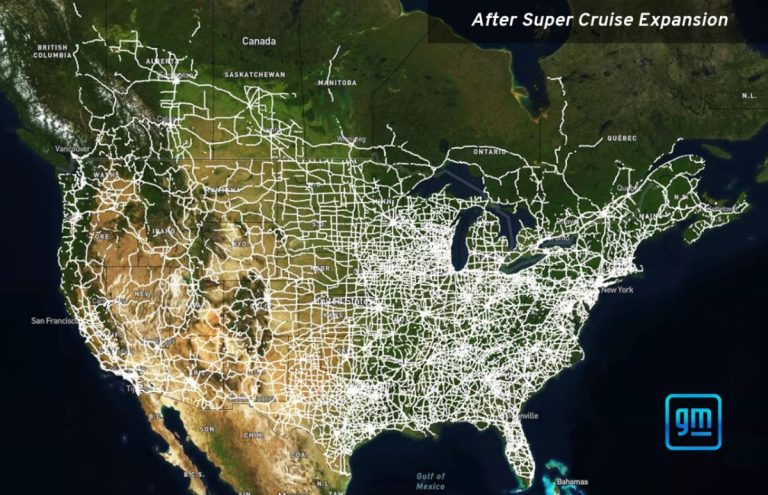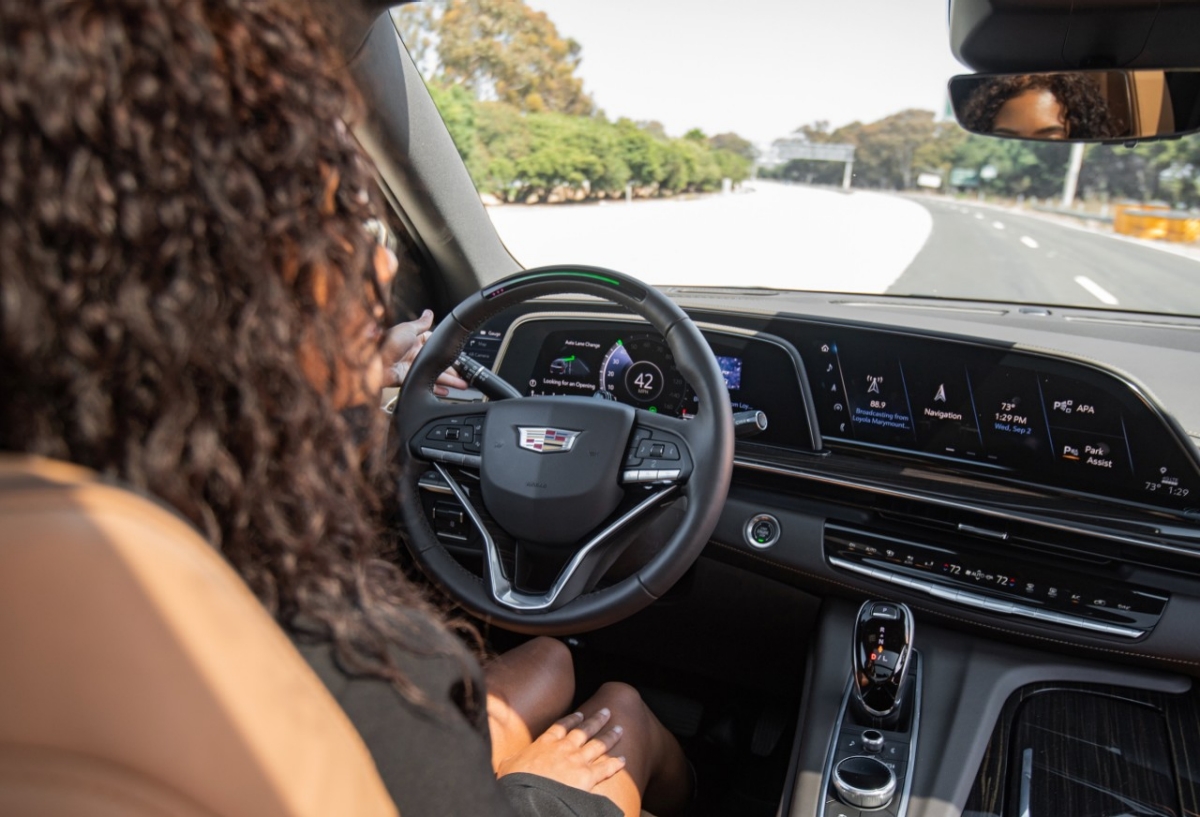While Tesla is certainly known for its self-driving technology (almost everyone has heard Tesla and Autopilot in the same sentence at some point), another automaker wants to take on the company as the most trusted brand for driving hands-free. Who would have thought that company would be General Motors?
The company has been building out its Super Cruise technology for years now and has been continuously adding more roads to work with the feature. In August of last year, GM expanded the network to 400,000 miles of roads in the United States and Canada, and today, the company announced it is almost doubling that to over 750,000 miles of roads and highways across North America.
While Super Cruise previously worked mostly with major interstates, this new expansion brings the feature to more state and federal routes with some iconic additions, including Route 66, the Pacific Coast Highway – CA Route 1, the Overseas Highway, and the Trans-Canada Highway. GM claims that this update makes Super Cruise “the largest truly hands-free operating domain in North America — nearly six times the coverage of other hands-free driver assistance technologies on the market today.”
The company also revealed it will now allow drivers of certain GM models who are towing to use the feature:
We expect this to excite Super Cruise customers, particularly those with compatible trailers who camp, boat, and use recreational vehicles. And adding Super Cruise with trailering to models like the 2024 Chevrolet Traverse or 2024 GMC Acadia will put Super Cruise in the hands (or should we say not in the hands…) of more customers with these passions — helping more GM drivers get to and from their destination more relaxed than ever before.

When it comes to safety, Anantha Kancherla, GM vice president of ADAS (advanced driver assistance systems), said in a statement that “GM is all-in on safely deploying Super Cruise as we make the technology available on more vehicles, more roads and for more people to enjoy. A key part of that is expanding the road network — in this case, nearly doubling it again — with LiDAR-mapped highways. High precision LiDAR mapping gives us an operating domain where we are confident in Super Cruise’s abilities.”
In comparison to Tesla’s decision to get rid of the LiDAR sensors on its vehicles, GM is all in on LiDAR. When Super Cruise is engaged, the technology stack includes LiDAR map data, real-time cameras, radar sensors, and GPS to create a “sensory field around the vehicle that assists in keeping it centered in the lane while elevating the driver’s comfort and convenience.” Just like Tesla’s Autopilot, Super Cruise can accelerate or brake based on the vehicle ahead, maintain lane position, and perform lane changes.
Despite being less known than Tesla for self-driving features, it seems that right now, GM’s Super Cruise might be the most pleasant and non-panic-inducing experience for drivers. Edmunds recently did a test comparing GM, Tesla, Ford, and BMW’s offerings and found they preferred GM’s Super Cruise. You can check out the video below:
We’ll have to see who is right here — Tesla or GM — in the technology stack that they chose to use to create a hands-free driving experience. It could turn out to be both, given enough time!

